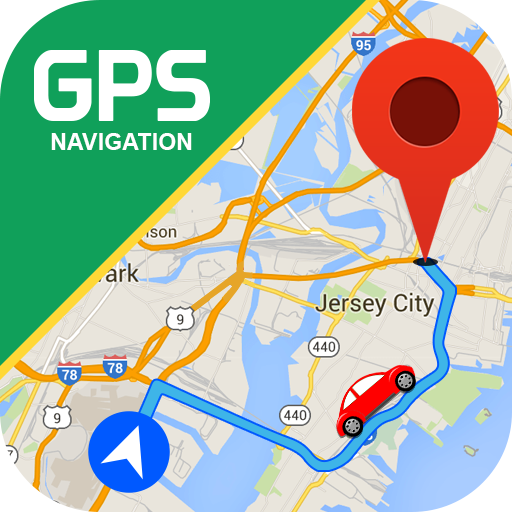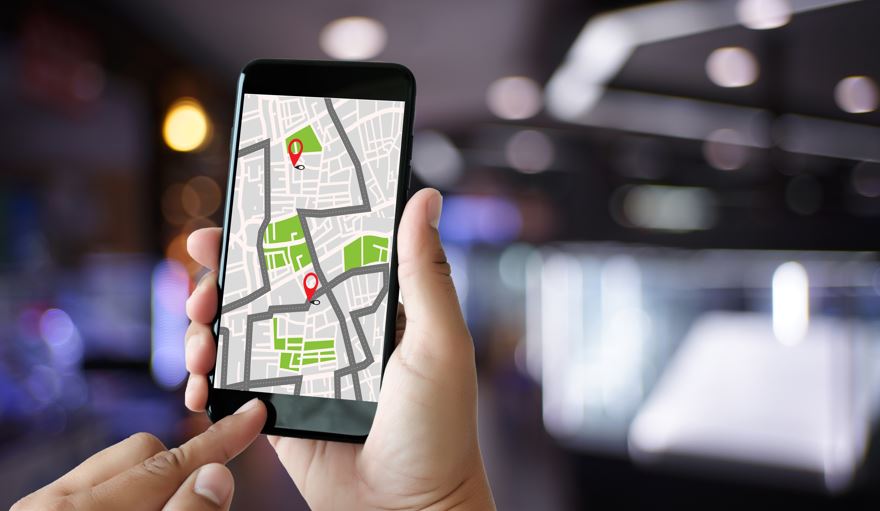Road Map Route
About this app
GPS navigation has evolved into a crucial tool for contemporary travelers, providing essential features such as real-time updates, turn-by-turn directions, and access to offline maps. In this discussion, we delve into the functionalities of road map route apps, outline the advantages of utilizing GPS navigation, and present key considerations for selecting an app that aligns with your requirements.
Additionally, we conduct an evaluation of the leading road map route apps, outlining their respective strengths and weaknesses to facilitate well-knowledge-based decision making. Prepare for an exhaustive guide on efficiently and accurately navigating using GPS technology.
What is GPS Navigation?
GPS Navigation is a sophisticated system that utilizes satellite technology to deliver precise mapping and directions to users, enabling them to identify optimal routes to their destinations.
This technology has brought about a significant transformation in the realm of navigation and travel, obviating the necessity for traditional paper maps and cumbersome physical guides. Over the years, the evolution of GPS Navigation technology has progressed from its origins in military contexts to its widespread utilization by civilians in smartphones and vehicular navigation systems. Leveraging advancements in satellite technology, GPS Navigation has the capability to pinpoint a user's precise location anywhere on the planet with exceptional accuracy. The integration of this mapping technology has streamlined the process of journey planning for users, aiding in the avoidance of traffic congestion, and fostering a sense of confidence in exploring new destinations.
Features of Road Map Route Apps
Navigation applications are equipped with a multitude of features aimed at improving user experience. These include intuitive interfaces, offline map capabilities for areas with limited network connectivity, voice guidance for hands-free navigation, and real-time traffic updates to facilitate effective route planning.
Real-Time Traffic Updates
The incorporation of real-time traffic updates is imperative for contemporary navigation applications, as they furnish users with up-to-the-minute traffic conditions, aiding them in circumventing congestion and expediting their arrival at intended destinations.
By harnessing data sourced from a variety of outlets like GPS signals, traffic cameras, and user inputs, real-time traffic updates are capable of providing accurate predictions of traffic patterns and recommending alternate routes to users in motion. These updates assume a critical role in ensuring a fluid navigation experience by consistently monitoring traffic fluctuations and occurrences, such as accidents or road closures.
Along with time savings, traffic alerts serve to heighten road safety by forewarning users of potential hazards on the route ahead, enableing them to make knowledgeable travel choices and opt for the most effective routes accessible.
Turn-by-Turn Directions
Turn-by-turn directions represent a highly valuable feature of navigation applications, offering meticulous guidance for both driving and walking routes. This functionality operates by leveraging GPS technology to monitor the user's present location and subsequently formulate real-time directives to facilitate reaching the intended destination.
Within the realm of car navigation, turn-by-turn directions serve to ensure that motorists receive unambiguous and timely notifications regarding forthcoming turns, exits, and lane modifications, thereby reducing the likelihood of missed exits or navigational ambiguity. Likewise, in the context of pedestrian navigation, this feature adeptly steers individuals through urban thoroughfares, accentuating prominent landmarks and points of interest en route. The provision of detailed route guidance assumes a pivotal role in fortifying user confidence and operational efficiency, particularly within unfamiliar locales where precise directions are imperative for a seamless journey.
Offline Maps
Offline maps play a pivotal role for users requiring dependable navigation in regions with limited or absent internet connectivity, offering access to pre-downloaded maps and directions.
These offline maps present notable benefits by freeing users from the need for a stable internet connection, guaranteeing access to navigation support irrespective of network availability. Through the incorporation of offline maps into their digital devices, individuals can readily access geographical information, plan routes, and receive step-by-step directions even in remote areas.
The process of updating these maps is seamless, enabling users to remain up-to-date with alterations in roads, points of interest, and traffic conditions. To ensure precise guidance, maintaining a strong GPS signal proves critical, significantly enhancing the effectiveness and accuracy of offline navigation.
Benefits of Using a GPS Navigation App
Utilizing a GPS navigation application confers several advantages, including enhancing user experience through precise route calculation, delivering dependable GPS accuracy, and furnishing functionalities such as estimated time of arrival (ETA) and comprehensive travel routes.
Convenience and Time-Saving
GPS navigation applications greatly increase convenience and save time by offering efficient route finding and advanced navigation tools that simplify travel planning.
These applications provide a wide array of features tailored to user convenience and time optimization. Users can effortlessly input their destination and select from multiple route options based on preferences like the quickest route, the shortest distance, or avoiding toll roads. The real-time traffic updates aid in navigating around congestion, preserving valuable time during travel. Voice-guided directions ensure drivers maintain focus on the road, eliminating the necessity to continuously check maps. Additionally, offline map accessibility permits travelers to navigate even in regions with limited connectivity, delivering uninterrupted guidance.
Accurate and Efficient Routing
GPS navigation apps offer a multitude of benefits, with one of the key advantages being their capability to deliver precise and effective routing, presenting users with various route alternatives and a high level of navigational precision. This accuracy is achieved by leveraging satellite signals to pinpoint exact locations, in conjunction with sophisticated algorithms that analyze real-time traffic data. By continuously updating and recalculating routes based on variables like traffic conditions, road closures, and user preferences, GPS navigation apps ensure that users can efficiently reach their destinations. Furthermore, the provision of diverse route options, including the shortest route, fastest route, or route with minimal tolls, enables users to select the path that aligns best with their individual requirements and priorities.
Factors to Consider When Choosing a GPS Navigation App
When choosing a GPS navigation application, it is crucial to take into account various factors, including:
- Pricing and subscription alternatives
- User-friendliness and interface design
- Presence of supplementary features
- Customization options aimed at augmenting the application's functionality
Price and Subscription Options
Price and subscription options play a pivotal role in the selection process of a GPS navigation app, as they exhibit significant variability across various leading GPS applications and navigation software solutions.
Upon exploration of these applications, users are frequently presented with a range of pricing structures including one-time purchases, monthly subscriptions, or annual plans. While some apps present freemium versions with basic functionalities, others deliver enhanced features through premium subscription packages.
Conducting a thorough evaluation of these options is imperative to ensure that the selected app is in harmony with one's financial constraints and navigation requisites. By conducting a comprehensive analysis of pricing, features, and user feedback, individuals can identify a cost-efficient solution that delivers the desired navigation experience while remaining financially prudent.
User-Friendliness and Interface
The effectiveness of a GPS navigation app is heavily influenced by its user-friendliness and interface design, particularly in the context of mobile navigation.
A user-friendly interface can significantly enhance users' ability to navigate the app and utilize its diverse features. Intuitive menu structures and well-defined buttons, for instance, facilitate users in promptly accessing the desired information. Visual elements such as color palettes, font selections, and interactive features all contribute to the aesthetic appeal and functionality of the app. By prioritizing these fundamental components of interface design, developers can craft a smooth and gratifying navigation experience for users on their mobile devices.
Additional Features and Customization
The inclusion of supplementary features and the capacity to modify settings are crucial elements to consider when evaluating a GPS navigation application, as they can substantially improve its functionality and enhance user satisfaction.
When users are enableed to personalize their navigation experience by specifying preferences such as route selections, traffic notifications, and points of interest, it introduces a level of individualization and convenience to their travels. These supplementary features not only enhance the application's versatility but also aid in crafting a tailored user experience that corresponds to specific requirements and preferences.
By diving into the varied customization alternatives at hand, individuals can streamline their navigation procedures and maximize the utility of their GPS application.
Top Road Map Route Apps Reviewed
Within this section, an analysis is conducted on several premier road map route applications, emphasizing their navigation functionalities, route configuration abilities, general user experience, and distinct selling propositions that differentiate them within the market.
Pros and Cons of Each App
Every GPS navigation application presents a unique set of advantages and disadvantages that influence its overall performance, user interface, and the efficacy of its navigation functionalities. When users evaluate these applications, they should carefully consider the benefits of precise real-time traffic updates, user-friendly turn-by-turn directions, and the availability of offline maps in contrast to potential limitations such as intricate menu structures, restricted customization capabilities, and occasional inaccuracies in mapping data.
The appeal of voice prompts and integration with other applications for seamless navigation should be carefully weighed against concerns regarding battery consumption and data usage. By conducting a thorough assessment of these elements, users can identify the application that aligns most effectively with their requirements and preferences.
Related Apps
-
United AirlinesGETVehicles and Maps
-
Parkster ParkingGETVehicles and Maps
-
TAP Air PortugalGETVehicles and Maps



















